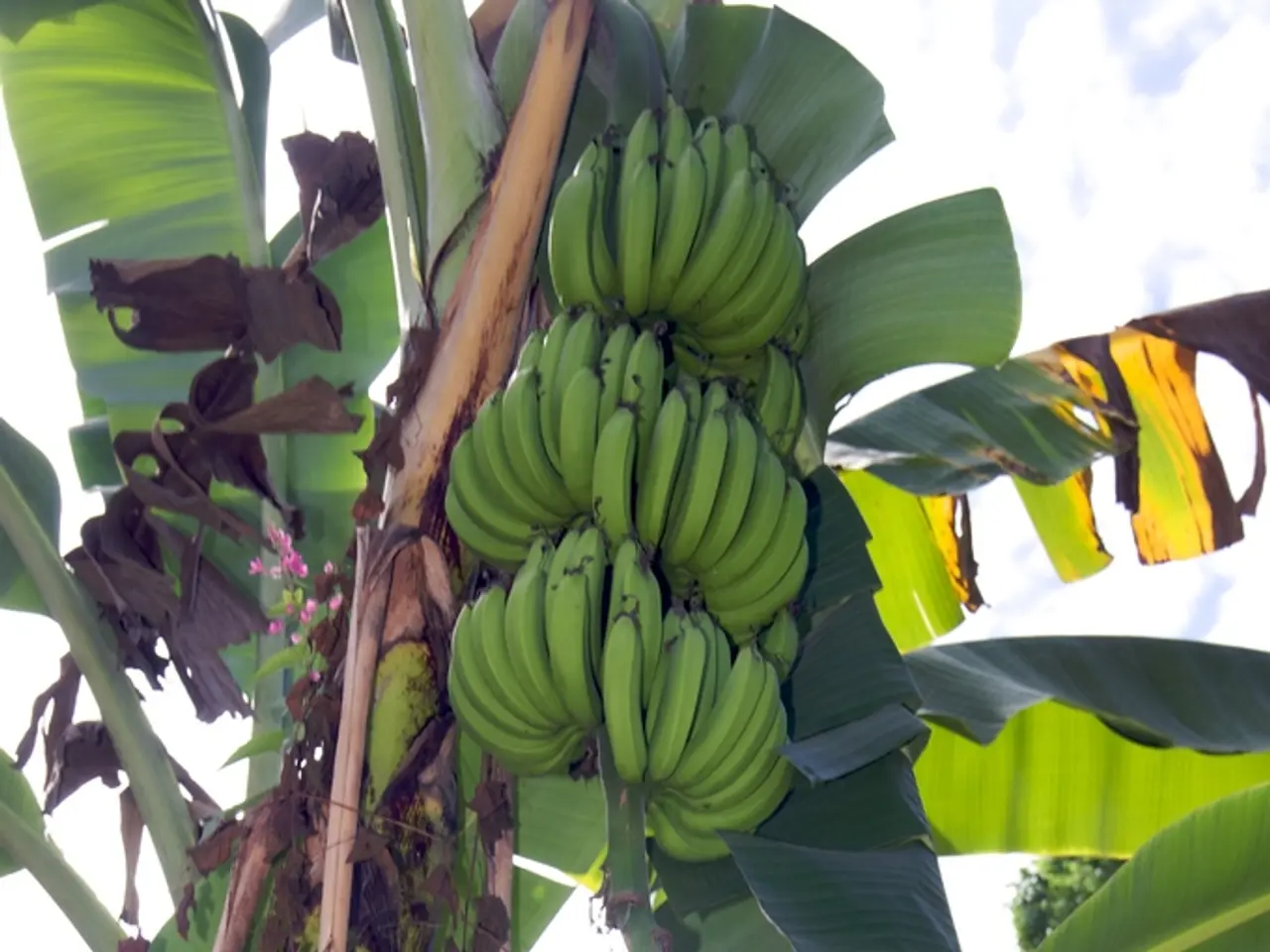Nature of the Banana Tree: A Comprehensive View
Bananas are not trees, as many might think, but rather oversized herbs that grow from rhizomes. These fascinating plants, part of the Musaceae family, are actually a part of the Zingiberales order, which includes plants like ginger, galangal, turmeric, and bird of paradise.
The most common variety found in supermarkets is the Cavendish, but there are thousands of other banana varieties, each with its unique characteristics. For instance, the Blue Java banana has a taste and texture that are compared to ice cream, and its peel turns yellow and spotted as it ripens, but the fruit has a blue color that deepens with maturity. On the other hand, Red Dacca bananas have red peels and pink creamy flesh, and are usually softer and sweeter than Cavendish bananas.
If you choose to grow bananas outdoors, they should be planted in clumps, as their shallow roots benefit from the added support. A sheltered spot that will protect the plants from strong winds is best for fruit yields. They'll need a lot of water during the growing season, and should be planted in loamy, well-draining soil with a pH of 5.5 to 6.5 and lots of organic material.
Banana fruits start out as a spike of yellow flowers protected by red or purple bracts, which appear at the top of the pseudostems. The blossoms grow in clusters of about 10 to 20, which will become the "hands" of fruit (technically, bananas are a berry!).
Some notable banana varieties include the Lady Finger bananas, also known as the "sugar banana", which are very popular in southeast Asia and are one of the smallest types of bananas to be grown commercially. New shoots called "pups" arise from the rhizome about every six months, clustered around the mother plant. Growers select a strong pup and cut off the others, and that pup then becomes the next crop's productive stem.
If you're interested in growing bananas indoors, consider varieties like Musa acuminata ‘Dwarf Cavendish’, Musa superba, and Musa velutina. These dwarf or ornamental bananas are more compact and manageable indoors.
A mature banana plant can soar up to 20 feet high, with 10 to 20 leaves at the top, each 10 to 11.5 inches wide. Banana plants are native to humid, tropical regions and do best in temperatures ranging from 80 to 95 degrees Fahrenheit. If you don't live in a tropical or subtropical climate, growing bananas outdoors is not recommended.
Interestingly, Gros Michel bananas, also known as "Big Mike", were the main commercial banana before Cavendish. They are slightly larger and sweeter than Cavendish bananas and were hit hard by disease. Despite this, they are still grown in some areas.
Finally, it's worth mentioning the Musa Basjoo, also known as the "Japanese banana". This variety is hardy to zone 5 and is important for gardeners because it will overwinter reliably in much of the U.S. and will still give you plenty of banana flowers and an exotic, tropical appearance, but it will not produce edible fruit.
In conclusion, bananas are more than just a common fruit. They are a fascinating part of the plant kingdom with a rich diversity of varieties and unique growing characteristics. Whether you're a gardener or a banana lover, understanding the truth about bananas can deepen your appreciation for this versatile and delicious fruit.
Read also:
- Impact of Alcohol on the Human Body: Nine Aspects of Health Alteration Due to Alcohol Consumption
- Understanding the Concept of Obesity
- Tough choices on August 13, 2025 for those born under Aquarius? Consider the advantages and disadvantages to gain guidance
- Microbiome's Impact on Emotional States, Judgement, and Mental Health Conditions








